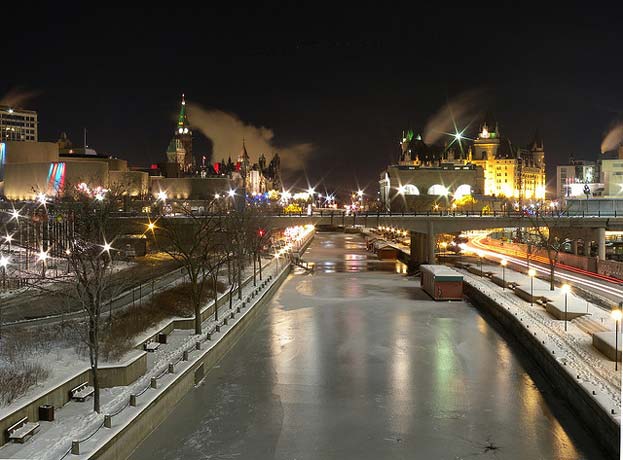Rideau Canal Canada
The Rideau Canal, a monumental early 19th-century construction covering 202 km of the Rideau and Cataraqui rivers from Ottawa south to Kingston Harbour on Lake Ontario, was built primarily for strategic military purposes at a time when Great Britain and the United States vied for control of the region. The site, one of the first canals to be designed specifically for steam-powered vessels, also features an ensemble of fortifications. It is the best-preserved example of a slackwater canal in North America, demonstrating the use of this European technology on a large scale. It is the only canal dating from the great North American canal-building era of the early 19th century to remain operational along its original line with most of its structures intact.
Outstanding Universal Value


UNESCO Criterion
Criterion (i): The Rideau Canal remains the best preserved example of a slackwater canal in North America demonstrating the use of European slackwater technology in North America on a large scale. It is the only canal dating from the great North American canal-building era of the early 19th century that remains operational along its original line with most of its original structures intact.
Criterion (iv): The Rideau Canal is an extensive, well preserved and significant example of a canal which was used for a military purpose linked to a significant stage in human history - that of the fight to control the north of the American continent.
The nominated property includes all the main elements of the original canal together with relevant later changes in the shape of watercourses, dams, bridges, fortifications, lock stations and related archaeological resources. The original plan of the canal, as well as the form of the channels, has remained intact. The Rideau Canal has fulfilled its original dynamic function as an operating waterway without interruption since its construction. Most of its lock gates and sluice valves are still operated by hand-powered winches.
Browse All UNESCO World Heritage Sites in India.

Historic Site and Monument
All the elements of the nominated area (canal, associated buildings and forts) are protected as national historic sites under the Historic Sites and Monuments Act 1952-3. A buffer zone has been established. Repairs and conservation of the locks, dams, canal walls and banks are carried out directly under the control of Parks Canada. Each year one third of the canal's assets are thoroughly inspected by engineers.
A complete inventory thus exists of the state of conservation of all parts of the property. A Management Plan exists for the canal (completed in 1996 and updated in 2005), and plans are nearing completion for Fort Henry and the Kingston fortifications. The Canal Plan is underpinned by the Historic Canals Regulations which provide an enforcement mechanism for any activities that might impact on the cultural values of the monument. Source

Want to read UNESCO Daily News Updates? Click Here!!!


